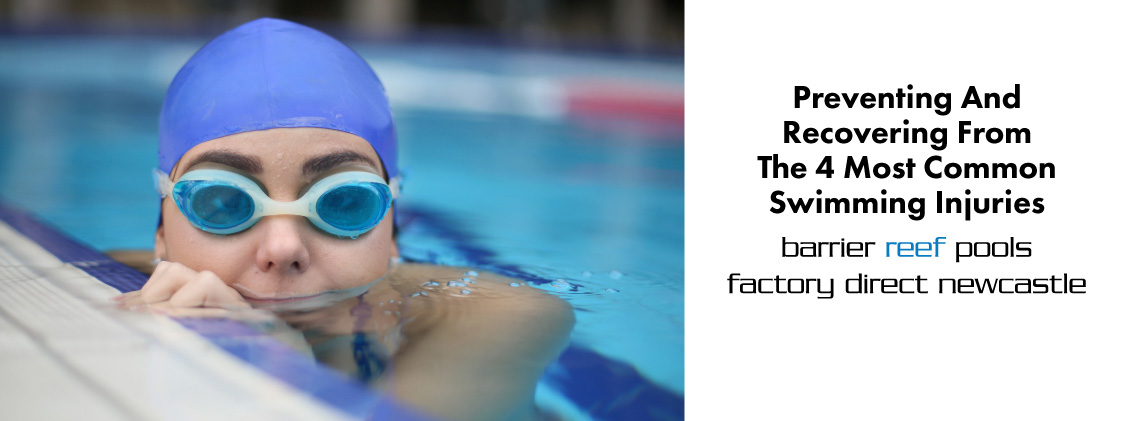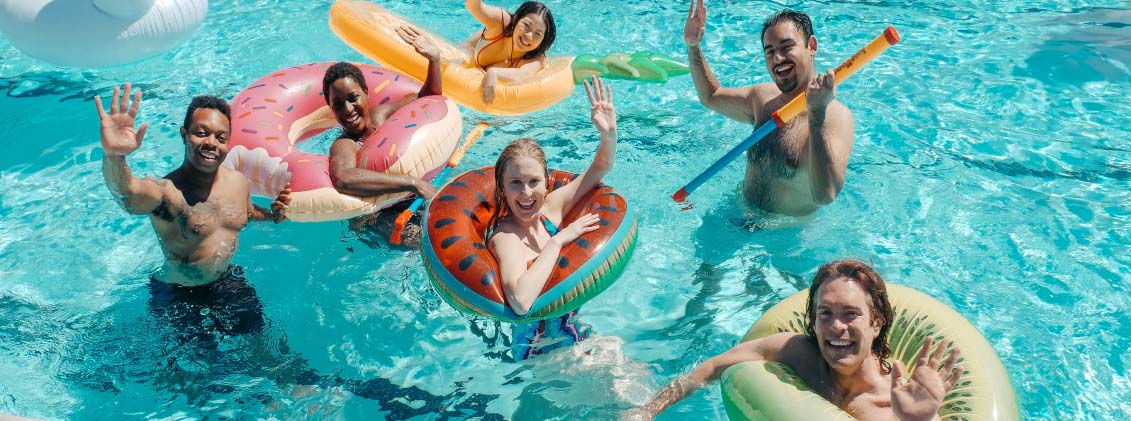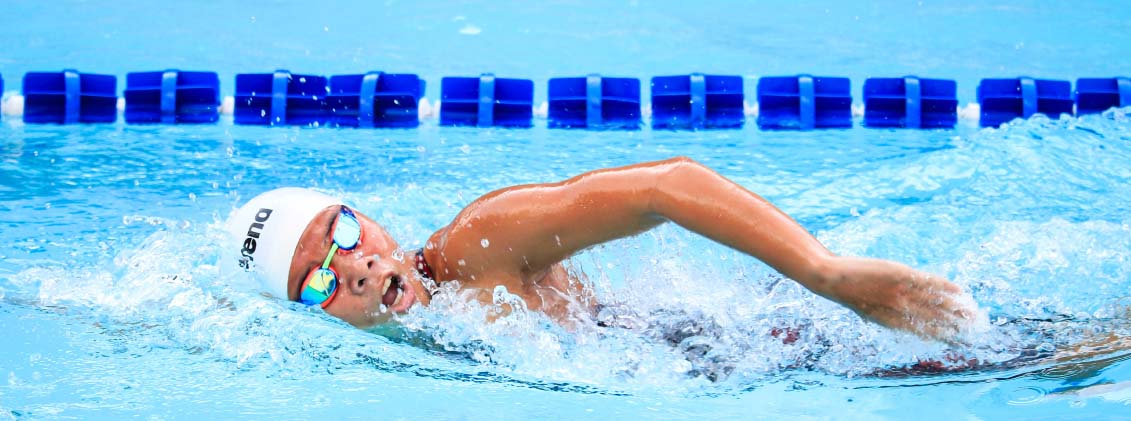Preventing And Recovering From The 4 Most Common Swimming Injuries
For some swimmers, swimming is nothing but a healthy form of recreation. However, for others, it's all about competition and pushing the limits. Swimmers who have aspirations of becoming professional athletes often end up pushing themselves too far, which can lead to a variety of injuries.

If you’re curious to know what kind of injuries you may sustain pushing yourself too hard and/or through the practice of flawed techniques, you’re at the right place. In this article, we’ll take you through 4 of the most common swimming injuries. Additionally, we’ll also look at the ways you can prevent them and recover from them.
1. Swimmer's shoulder
Swimmer’s shoulder or shoulder impingement is a condition caused by excessive rotation of the shoulder joints. The condition develops as muscles and ligaments are overworked due to fatigue, excessive training, flawed technique, past shoulder injuries, and hypermobility. Ignoring the swimmer’s shoulder and continuing to swim can result in more serious complications such as damage to the shoulder capsules and ligaments, bursitis, rotator cuff tears, and tendonitis.
To prevent a swimmer’s shoulder, you should concentrate on practising your strokes to make them perfect. An important thing to remember on the prevention front is that you shouldn’t enter water thumb-first. Always enter the water with the entirety of your hands. Also, don’t strain yourself – if you feel overworked after a long swimming session, take a break.
Take a look at how to make the most out of your fibreglass pool!
However, if you do sustain this injury, we suggest the following tips for rapid recovery:
Ice application to the shoulders following training. 20 minutes of it should be sufficient.
No swimming for 24 – 48 hours based on the severity of symptoms.
Consume anti-inflammatory medications to manage inflammation.
Perform rehabilitation exercises for strengthening weak muscles.
Seek professional passive care in the form of trigger point work, ultrasound, neck and/or shoulder adjustments, and interferential current.
2. Swimmer's ear
Swimmer’s ear or otitis externa is an ear canal infection – the tube running from the eardrum to the ear’s outside. While the infection can be triggered by things that have nothing to do with swimming, in swimmers, it’s mostly caused by water trapped inside the ear. When excess moisture gets trapped inside the ear, it can lead to the removal of earwax and the softening of the skin inside the ear.
Some of the symptoms of the condition include:
Severe pain inside the affected ear
Itchiness and tenderness
Foul-smelling, yellow-coloured discharge

Treating a swimmer’s ear is important as letting it lie can lead to chronic otitis externa or long-term swimmer’s ear. This condition is more difficult to treat and involves experiencing harsh symptoms for more than 3 months.
Treatment options include:
Eardrops containing steroids, antibiotics, antifungal medications, and/or healthy chemicals make germ growth inside the ear more difficult.
Painkillers for managing severe pain.
Ear wicks and IV/oral antibiotics for severe swimmer's ear.
Some of the preventive methods include:
Keep ears dry through the use of ear plugs, bathing caps, or swim moulds.
Dry ears after swimming sessions by using a towel.
Use a hair dryer for drying out excess moisture inside the ear.
3. Swimmer's knee
Swimmer’s knee is a condition that involves severe knee pain. Typically, swimmers who practice breaststroke regularly are at risk of sustaining this injury. This is due to the fact that breaststroke requires the knees to be flexed and rotated. As a result of this flexing and rotation, the medial collateral ligament, which is located in the knee, is strained.
Are lap pools good for keeping in shape? Find out here!
Some of the telltale signs and symptoms of a swimmer's knee include:
Dull knee pain
Lower knee pain
Constant knee tension
Difficulty in unbending the joint
Lack of knee flexibility and knee immobility, which can have an adverse impact on swimming speed
Redness and swelling in the affected knee
Treating a swimmer’s knee is essential, especially if you have aspirations of becoming a professional swimmer. Ignoring the condition can worsen it and eventually, you may be unable to swim altogether. Typically, the condition is treated using:
15 minutes of ice compress application, twice a day
Swimmer's knee recovery exercises and therapeutic gymnastics, which can strengthen the muscles and ligaments in the knee area
Complete rest from swimming - doctors determine the period of rest depending on the severity of the condition
Antipyretic and anti-inflammatory medications, which can help in pain management.

There are some ways you can adopt to lower your chances of developing a swimmer’s knee, such as:
- Pay close attention to your technique when performing the breaststroke. If your technique is on-point, you should be able to prevent the swimmer’s knee.
- Perform warm-up exercises before swimming. You should also do some warm-ups after entering the water. Your warm-up routine should also consist of kicking drills.
- Stop swimming if you feel any discomfort around the knee region. Some injuries can be aggravated if you don’t respect your limits.
- After your swimming session, perform warm-down and stretching exercises.
4. Bicep tendonitis
The repetitive movement of the arms and shoulders can result in a condition known as bicep tendonitis. It involves the swelling and subsequent inflammation of one or more of the bicep’s tendons. The condition can result in arm stiffness and immobility as well. Some of the symptoms of bicep tendonitis include:
- Restricted mobility
- Worsening pain with movement
- Weakness in the arm muscles
- Difficulties in arm rotation
Bicep tendonitis is treated using the following methods:
- Ice compress application
- Nonsteroidal anti-inflammatory medications for managing pain
- Complete rest from swimming until the affected tendon heals completely
- Physiotherapy involving strengthening and stretching exercises for improving motion range
In severe cases that involve ruptures and/or tears, surgical intervention may be necessary for treating the condition. Bicep tendonitis can be prevented by putting the following tips into practice:
- Perform stretching and other warm-up exercises prior to swimming.
- Care for your arms and shoulders regularly.
- Don’t push yourself – take breaks from swimming if you feel stiffness in your arms and shoulders
- Make sure that you learn the right techniques and practice them.
Wrapping Up
So, these are the 4 most common swimming injuries. We hope that you can put the preventive measures into practice and avoid these injuries to continue swimming at the peak of your powers.



